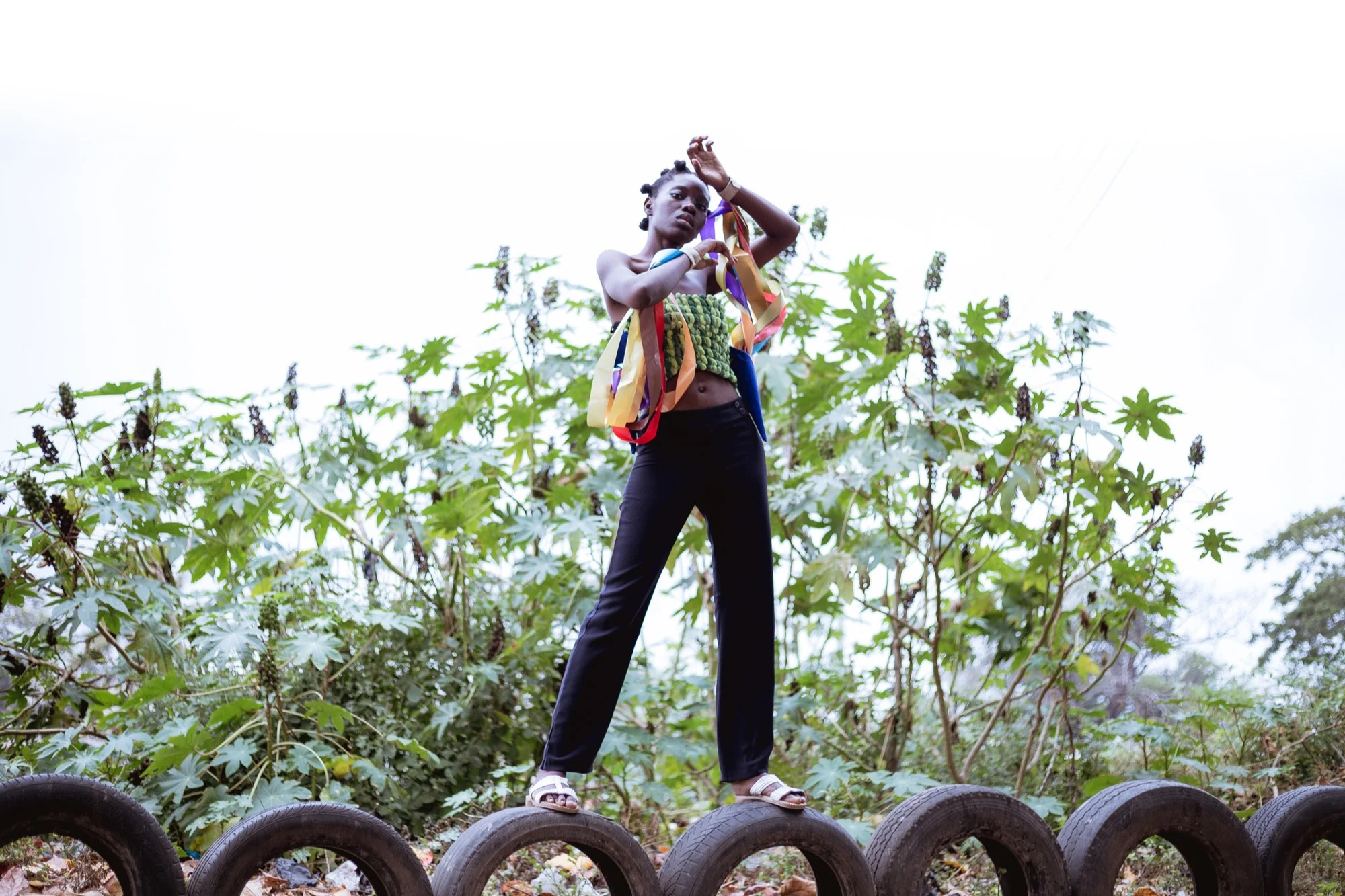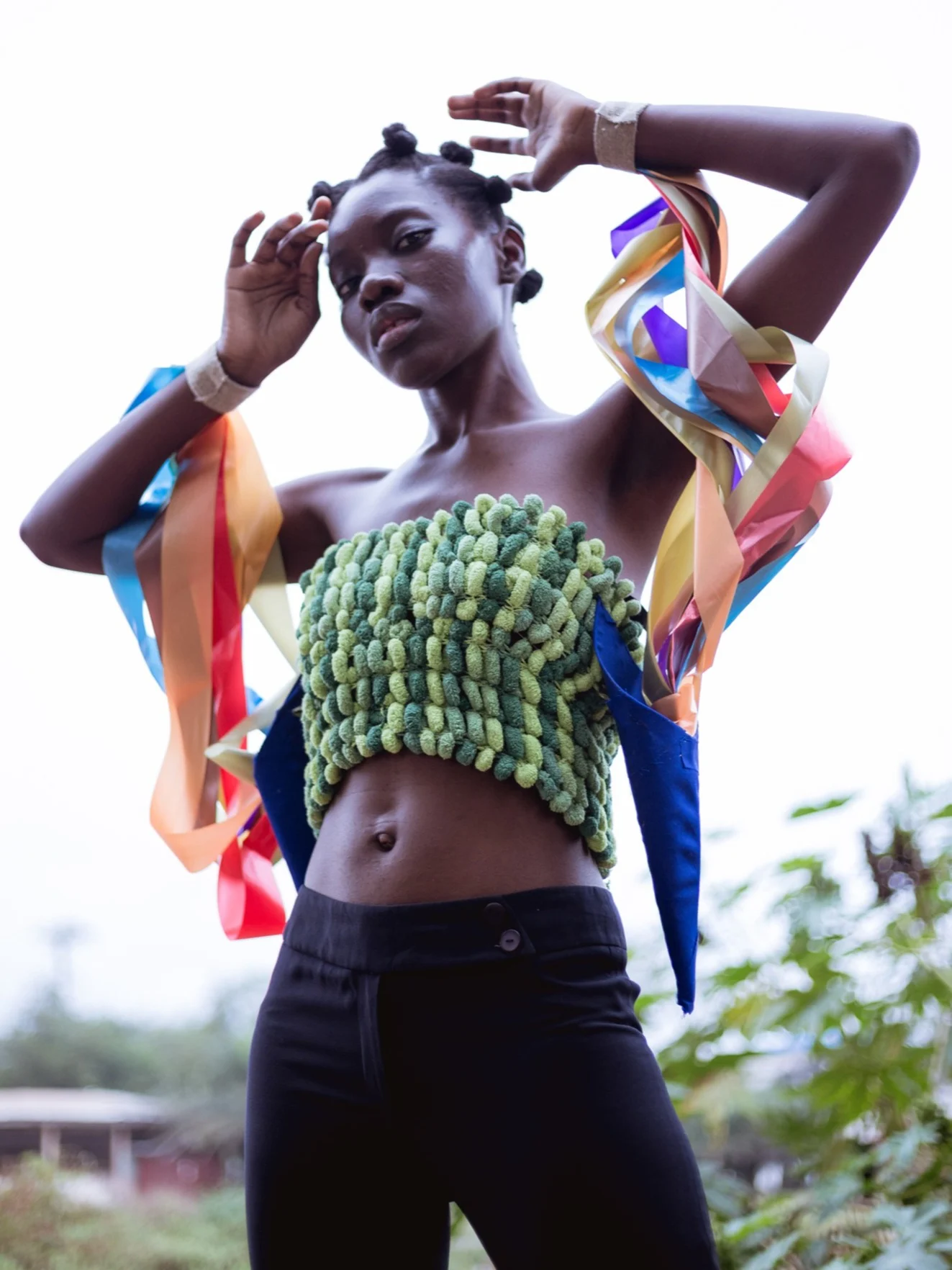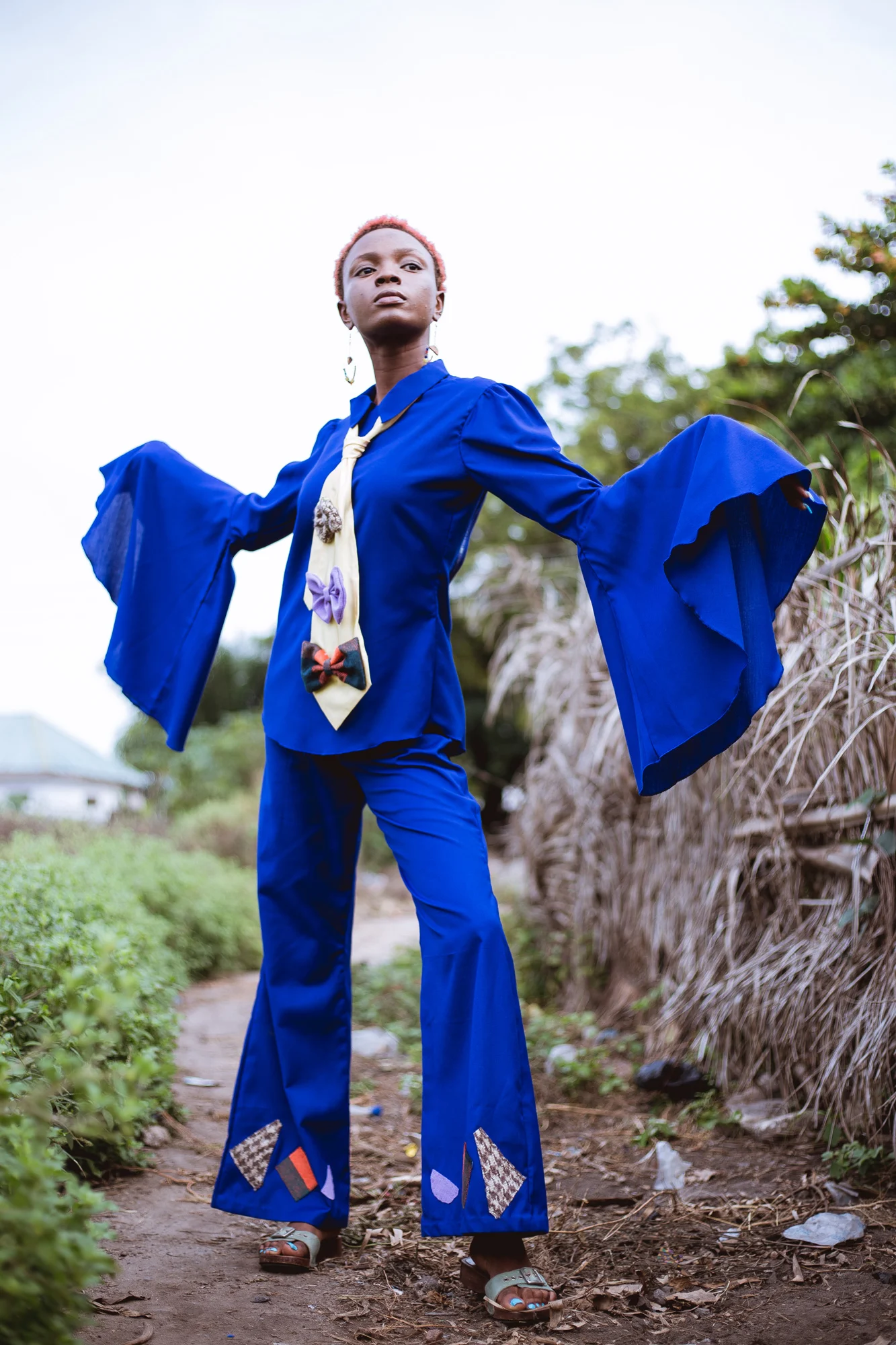


Sackitey Tesa explores the social issues of fast fashion
Photographer and stylist Sackitey Tesa has collaborated with WePresent to create a project titled Atsɛɛ niŋ afɔɔɔ, which translates as “things are not meant to be thrown away.” Here Jareh Das speaks to Sackitey about how his work draws attention to social issues around the second-hand clothing industries and the creative potential of upcycled tailoring, particularly with regards to the gargantuan markets in Accra, Lagos and Nairobi.


Sackitey’s first encounter with photography and fashion was by leafing through his parents’ weighty family albums. His mother is a costume designer with a degree in African studies. “Growing up, she taught me and my siblings how to make things from junk, assembling random bits of fabric and materials to make her creations,” Sackitey explains. “When I started photography, I realised that watching my mum make clothes and having a camera document our lives – which might not have seemed out of the ordinary at the time – had a lasting impression on me. When I decided to take up fashion styling I returned to this foundation with the idea of bringing an African perspective to the high fashion aesthetic present in my work.”
Sackitey studied Business Administration and is a self-taught photographer. He began taking pictures with a mobile phone and moved on to DSLR as his craft developed. Photography for him began as a form of escapism from daily life and when it came to thinking about where to source clothes for his shoots, Kantamanto served as a familiar point of reference as he often visited the market growing up in Accra. His parents took him there to buy school clothes, formal wear, shoes and other items.


Located in the heart of the city’s Central Business District and right next to the legendary Makola market, Kantamanto consists of around 5,000 stalls served by a workforce of approximately 30,000 traders and informal workers. It is the largest second-hand clothing market in Ghana and is filled with bargain items or Obroni W'awu, the Akan expression for dead white man's clothes. Obroni W'awu comes from the idea that cheap imports must have been the property of deceased foreigners, hence the name. According to a survey by The OR Foundation almost everyone in Ghana regardless of class, gender, age and profession shops second-hand. Popular brands from Zara, French Connection, Levi’s, H&M and niche South Korean labels are there, alongside books, CDs, DVDs, magazines, the odd spare electrical parts and household goods. The market is a cacophony of sights and sounds as traders call out prices of varying cedis (“one cedi,” “two cedis,” “three for five cedis”) to entice people to their stalls.

When I started photography, I realised that watching my mum make clothes and having a camera document our lives had a lasting impression on me.
The second-hand clothing industry is the fourth global pollutant behind the transport, housing and food waste, contributing to 10% of all global carbon emissions according to The World Economic Forum. Decades of mismanagement, instability, and increased global competition have all contributed to the near-collapse of the garment industry in sub-Saharan African countries once vibrant textile industries.
Sackitey is sensitive to the nuanced and complex relationship Ghana and other African countries have to this industry and states: “The second-hand industry is impossible to get rid of as it is lucrative for traders and provides affordable clothing for consumers including myself,” he says. “The problem is that brands are so focused on fast fashion and they continuously produce more clothing that gets shipped here.”

Upcycled items are branded with the names and logos of popular Western brands since consumers think that everything Western is better.

In his most recent series – a collaboration with WePresent titled Atsɛɛ niŋ afɔɔɔ which translates as “things are not meant to be thrown away,” – Sackitey draws attention to social issues around the second-hand clothing industries and the creative potential of upcycled tailoring. Unlike in some of his past projects, the outfits for this series focus on the many upcycling tailors who work in Kantamanto. “As someone who constantly goes to Kantamanto, upcycled items are branded with the names and logos of popular Western brands since there exists in the mind of consumers that 'everything Western is better,'” says Sackitey. “My mother, a teacher in a fashion school, recounted an incident where one of her students had to take back his locally-made bags from a distributor because he was stitching other brand logos on them, as this was what customers preferred.”

Sackitey commissioned upcycling tailors in the market to create outfits from curtains, tablecloth and bed sheet fabrics but specifically asked them not to emblazon the clothes with Western branded logos that customers often favor. One of the most striking images from this new series sees a model standing confidently with her arms folded across her chest in front of a wall advertising a boxing gym. Dressed in a simple black tank top, its sleeves have been customised with multi colored belts stitched together to resemble a kind of armour. In another image, a male model leans against a motorcycle showing off a customized, sheer two-piece made from red net curtains and blue chiffon fabric.


It’s essential for local creatives to collaborate so that this pushes creativity in Ghana forward.



Sackitey holds on to things he finds. You’ll see the same props and items of clothing popping up in multiple projects. Rather than using the urbanity of Accra as background, Tesa creates his own set designs or chooses locations that emphasise a particular social-environmental issue, greenery or vegetation. In Of Dreams; Kwamei as Nightmares, a figure stands in front of a yellow metal door dressed in a green blazer emblazoned with yellow pieces of fabric that resemble Post-It notes worn with a popular rose-patterned fleece blanket refashioned as a Victorian-era skirt. The look is completed with a black cloth wig adorned with silver horns, suggesting that what the viewer sees is part-human, part-animal. For Not of This Earth a figure is dressed in a space-suit of sorts adorned with roll-on deodorant balls reminiscent of Daleks, the fictional extraterrestrial race of mutants from British TV show Doctor Who. Yesterday's Shopping is more political, capturing two male models wearing matching corsets made from plastic waste, poised in front of bags of plastic bottles for recycling: a comment on the abundance of plastic waste the city generates.

Sackitey’s models don’t conform to heteronormative gender ideals, as his emphasis is on using fashion and styling as a freeing space. He says this derives from growing up understanding that Ghanian fashion has a history of being experimental with gender. “In the past, people were more expressive through their fashion irrespective of their gender, so I’ve grown up with the idea of clothes allowing individuals to express themselves, as opposed to being limited to ideologies of masculinity or femininity,” he says.
I’ve grown up with the idea of clothes allowing individuals to express themselves, as opposed to being limited to ideologies of masculinity or femininity.


Sackitey sees collective collaboration as the future of creativity on the continent and states. “It’s essential for local creatives to collaborate so that this pushes creativity in Ghana forward.” He says. “I see what’s happening in places like Nigeria, which gets so much more attention because of this strength-in-numbers approach and the collective force of young creatives coming together...we really have to draw on this for the future.”